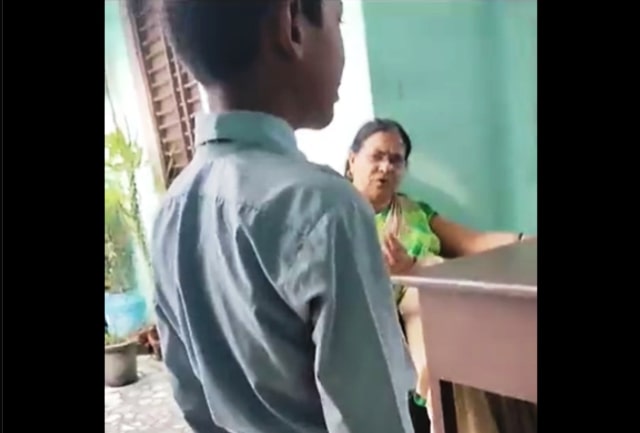Shakeel Qureshi, a seasoned theatre personality based in Delhi, says if we turn all historical events into a vicious negative with violence, our future will be grotesque. His views:
Unity in Diversity: it’s intrinsic beauty and bonding, the manner in which the entire country of India – Hindustan – wears it like an ornament, is not only a precious childhood inheritance. It is a stream which is eternally flowing in our veins. I agree that some of us, that people who are like us – they have tried to rip apart the painstakingly stitched social fabric of India. They are still at it, and Haldwani is the latest example of the communal hatred which is affecting our social collective. There is a fear simmering in the air, and there is certainly a tangible sense of hatred stalking the land.
These people who are spreading fear and hate, they are not aware that once you start assaulting a helpless citizen in a closed room, he is forced to withdraw. But how long can he withdraw in a closed space? He is pushed to the wall, and when he has no recourse left, and when he just can’t manage with non-violence or a rational argument to save his body and soul, he has to retaliate. He has no option left.
Are we, indeed, trying to create such a pessimistic scenario, especially in the Hindi heartland?
Those who are relentlessly spreading hate and divisions in our secular society, they will not only bear the consequences in their own lifetime, but they will also bestow it on their future generations. This is a food which would always be unpalatable, but people will be forced to swallow it.
ALSO READ: ‘BJP Has Raised And Dumped Ayodhya Issue Cyclically’
I would reiterate, that humanity seems to be dying in contemporary India, but it can never be murdered. It will always remain alive, pulsating. I am certain, where ever they are spreading this poison, the collective chorus against this polarization, for a secular democracy, will emerge from there itself.
We are all dependent on each other as social creatures. We cannot do without each other, whatever be our identities, caste, religion, class. A person who dyes clothes, he does not look at clothes in black and white. In his tin of miracles there are many colours. He makes a kaleidoscope of colours which makes the world look beautiful, and we too feel beautiful wearing those vibrant colours!
As far as aesthetic beauty is concerned, we were once upon a time trained in the idea and praxis of beauty in our social life, in our arts and culture, in our dance, theatre, cinema and music. Now, a stagnant stasis seems to have arrived. We seemed to have hit a tragic crossroad whereby all that was pristine seems to have become dead and sterile.
People seem to have lost the capability to mingle with each other; find a shared synthesis in love and compassion. There seems to be a collective loss of belonging to each other. Everyone seem to be looking at each other with doubt and disbelief.
This contemporary era of India needs brotherhood and sharing, and we have to work hard for it – with honesty and commitment.
The demolition of the Babri Masjid on December 6, 1992, is a black spot on India’s conscience. Even then, almost the entire media and nation called it a black day. As a young person, we saw the violence. In campuses and colleges, debates, cultural programmes, theatre and film-screenings were disrupted routinely by the rowdy followers of polarization who were brazenly undemocratic. This pattern has been going on since then.
Coincidentally, I had passed the entrance exam of FTII, Pune. When I went for the interview, I was asked: “As a Muslim citizen of India, how do you look at the demolition of Babri Masjid?”
I had responded by saying that in FTII there is a studio of legendary filmmaker V. Shantaram, which is a ‘monument’ and it must be eternally preserved. However, if some people want to damage it, will you allow that?
That is, if you don’t like such an act, then how can any Muslim or Indian citizen appreciate the demolition of a mosque which has been there since so long? History gives birth to the present, and without our history, we have no present. If we choose to turn all historical events into a vicious negative with violence, then our future too would turn grotesque
In this context, please allow me to share a poem which I have written recently.
‘Distance and Relationships’
From my house, my ‘babu’s’ shop was not distant, at the corner of the Harphool Singh Basti… the ‘jungle-waali masjid’ would smile, once we zigzagged from one lane to another, we would say hi, hello!
The bells of the Arya mandir would create ripples in the body, and the sublime shabad in the Gurudwara would create sweet sensations, healing our soul…
If you cross the Sadar Thana Road, you would discover a stone coloured with saffron under a tree, which would protect the Bajrangbali, Hanuman…
They were all so dear to me…Like a beloved….
(The narrator has worked with the doyen of Indian theatre, Ebrahim Alkazi, film producer Anand Mahendroo and filmmaker Tigmanshu Dhulia. He also dabbles in wood carving and photography)
As told to Amit Sengupta
For more details visit us: https://lokmarg.com/

